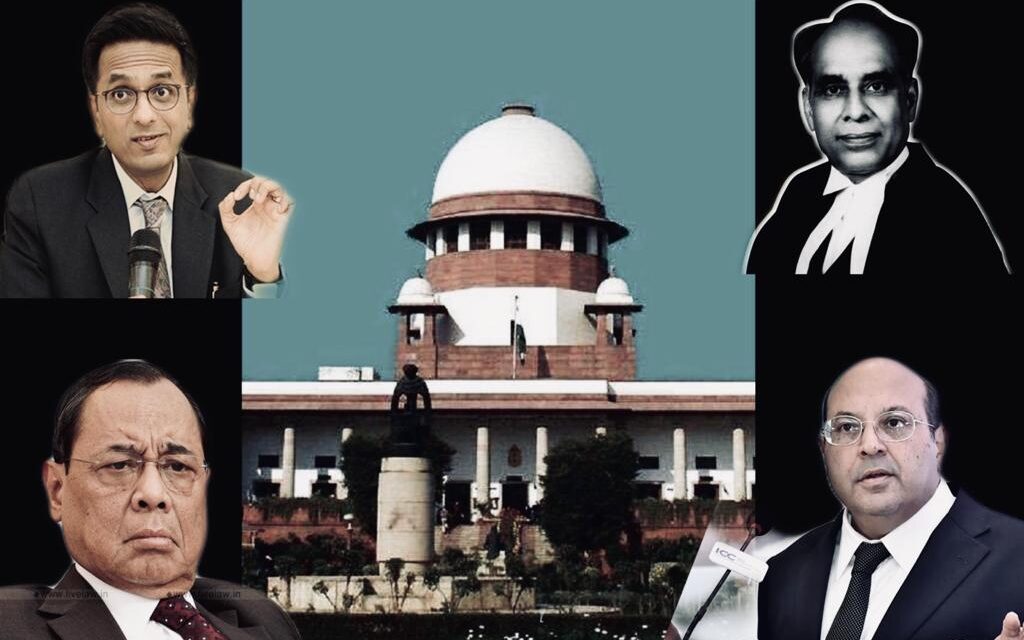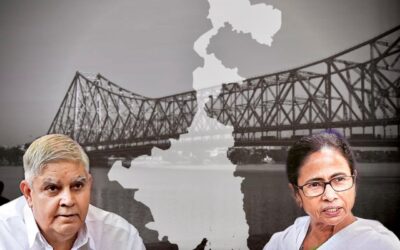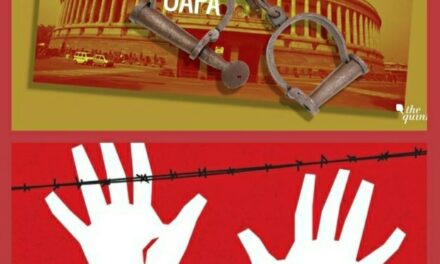Supreme Court: A populist institution?


Chetan Soni
Dr. Justice D.Y. Chandrachud while overruling ADM Jabalpur v Shivkant Shukla said that:
“When histories of nations are written and critiqued, there are judicial decisions at the forefront of liberty. Yet others have to be assigned to the archives, reflective of what was, but should never have been.”
The Supreme court of India indeed is one of the most powerful courts in the world. In its heyday, it shone akin to the north star, upholding constitutional values, butting heads with the executive when it displayed shades of authoritarianism. However, the legacy of the supreme court isn’t as pristine as it seems prima facie. In 1976, in the particularly ominous ADM Jabalpur Case, where the Supreme Court disallowed Habeas Corpus pleas in the High courts under Article 226 and turned a blind eye to the state’s draconian preventive detention policies. The doors of justice were closed, as even a male-fide detention order could not be challenged before the court, thus depriving the citizens of their Right to Life enshrined under article 21. The courts under the scrutiny of the public eye failed miserably. The guardian angel of fundamental rights was reduced to a shallow institution, subservient to the wants of the executive. And in rather crude terms, was limited to a ‘yes man’- Justice Beg while delivering the majority judgment said that “The care and concern . . . bestowed upon the welfare of detenus who are well housed, well-fed and well-treated is almost maternal.” and later went on to defend the emergency “the grave dangers of tomorrow, apparent to those who have the eyes to see them, have been thus averted.”.
It must also be noted that the socialist Indira Government at the height of its political powers, in power with an astounding popular mandate had effectively painted the narrative within the judiciary to be anti-poor, while protecting the interest of the land-owning classes. Further, the center till 1977 had a thumping majority that could ward off judgments through its parliamentary strength.
In its eagerness to exorcise the demons of the Emergency, and clean up its image it ended up becoming what it had been constitutionally instituted to fight. Much like the approach taken by the Indira Gandhi government, the Supreme court is now attempting to appease the masses. In the Minerva Mills case, Justice Bhagwati’s concurring arguments sounded much like Indira Gandhi’s wherein they declared Directive principles to be a part of the constitution, and thus to uphold the same as their constitutional duty. Before 1977, the Supreme Court had largely attempted to play a negative role, that is, its powers were used to largely limit and confine governmental action within constitutional bounds.
The Kesavnanda Bharti judgment defined the basic structure, even while it conceded, it still retained the right to have a final say. But now, aiming to represent the ‘people’ it started taking a positive interventionist approach. Unsurprisingly, during this time one can see a rise in the Public Interest Litigation culture. Justice P.N. Bhagwati largely heralded as the father of PILs in India spoke about how appalled he was when he realized his justice was not reaching the “stark naked poverty” in states such as Bihar, Orissa, and Uttar Pradesh. While after the immediate adoption of the constitution, the political discourse was stemmed around fundamental rights being a hindrance to the effective application of part IV now, in the post-emergency period, the court effectively declared that the fulfillment of directive principles could not be left to the legislature, but was rather its constitutional duty. The same court which had abandoned the people now wished to be the harbinger of social revolution through active policy building. To summarise, the court in its failure to exercise judicial restraint now fermented judicial activism.
The new Messiah’s wanton thirst for power led to actions which at times were outside the defined constitutional limits. An exercise of judicial creativity which has not always been valid in law. The activist approach has led to judges deciding cases that are political or concern larger public sentiments, even though outside their permissible limits. It has rather unabashedly tiptoed on matters specified under legislative and executive authority. The same is blatantly visible through the 2017 judgment of State of Tamil Nadu & Ors v. K. Balu & Anr. In the present case, the apex court in all its might ordered the prohibition of the sale of liquor within a distance of 500 meters from the outer edge of a national or state highway. The court’s decision was arguably based upon murky and unsatisfactory grounds. However, more crucially the Supreme Court failed to recognize the threshold on its powers. It partially/fully prevented the sale of liquor, a power granted under Entry 8 of List II of the Schedule VII of the Constitution, wherein each state has been empowered to regulate the production, manufacture, possession, transportation, purchase, and sale of intoxicating liquors. Therefore, exclusive powers to legislate, make policy decisions with respect to the sale or prohibition of liquor lies with the State, rather than full administrative control over such policy implementation too. More so, even the Centre could not attempt to form policy decisions on this matter due to the matter specifically lying in the State list.
The Bombay High Court in the case of Loksatta Movement & Anr. v. BCCI had ordered the state government of Maharashtra to shift the Indian Premier League cricket matches out of the State so as to divert the water that would have been used to water the pitches to drought-affected areas. The same amounts to the direct policy being made and the executive’s discretion to be ignored. Another example of judicial overreach in the case of K. Veeramani v. Chairman, Teachers Recruitment Board, where the Madras High Court while hearing a writ petition, ordered that the national song “Vande Mataram” has to be played and sung in all schools/colleges/universities and other educational institutions on specific days. The same was done even though there was no law mandating the same. At this point, with the numerous committees that time and again are instituted by the Supreme Court to look into the validity of executive policies, one has to mention voices within the court who stand by the principle of separation of powers. In Union of India v. M. Selvakumar, the apex court opined that “It is not in the domain of the courts to embark upon an inquiry as to whether a particular public policy is wise and acceptable or whether the better policy could be evolved. The Court can only interfere if the policy framed is absolutely capricious and non-informed by reasons, or totally arbitrary, offending the basic requirement of the Article 14 of the Constitution.”. The same was upheld in NTR University of Health Sciences, Vijaywada v. G. Babu Rajendra Prasad and Anr. wherein it was reiterated that the constitution does not allow the court to advise or direct the executive in policy matters.
One at this time must also mention ground-breaking judgments wherein the judiciary had to step in the shoes of the executive to fill the lacunae in law, in the absence of which, a gross violation of the people’s fundamental rights were taking place. As present in Hussainara Khatoon v. the State of Bihar, Olga Tellis v. Bombay Municipal Corporation, M.C. Mehta v. Union of India the court stepped in to protect the people and uphold their rights enshrined under Part III. Judicial activism has also managed to shape and evolve one’s rights, through an inter-relation of rights as seen in Maneka Gandhi v Union of India. Here, the supreme court expanded the scope of the Right to life under article 21 and gave the concept of the “golden trio”, wherein Article 14, Article 19, and Article 21 were to be interpreted in sync with each other and not independently in a vacuum.
In the Puttaswamy judgment, where the ADM Jabalpur judgment was ceremoniously and categorically struck down by the bench, the courts further expanded the scope of the Right to life by reading in the right to privacy as a fundamental right under article 21. In the landmark case of Vishaka v. State of Rajasthan, the court here went ahead and categorically framed regulations with respect to sexual harassment at workplaces, until a legislative act came in place. Thus, judicial activism has put it in a position to many a times breach and ignore the very document it seeks to uphold, at times for a good cause, but it must realize an over-enthusiastic judiciary can lead to a redundant executive and legislature. An attribute witnessed during the rise of the judiciary owing to the numerous coalition governments in power from 1977 till 2014.
However, even so, the reluctance of the judiciary to protect fundamental rights and exercise its powers of judicial review to question the validity of morals legislation or state intervention again raises eyebrows. The rulings in cases have been largely based on notions of ‘majoritarian sentiments’ and ‘public morality. Visible in the orders passed for standing up for national anthem or prayer requirements, the regulation of sexuality, or the regulation on culinary preferences, and the regulation of minority-community-centric trade in the name of cow protection, all violate crucial fundamental rights, but due to the lack of majority appeasement, it has time and again wished to look away. Therefore, one cannot help but wonder whether the judiciary functions as per constitutional morality or much like a populist institution, the majority’s morality.
Chetan Soni is an undergraduate student of law from O.P. Jindal Global Law School. Shirish Sachdeva is a student of law and co-founder of The Policy Observer. (The opinions expressed in this publication are those of the author. They do not purport to reflect the opinions or views of The Policy Observer or our members.)
Related Articles
Privatization of Liquor: A Look Into the Loopholes of The Policy
The division of the city was done into 32 zones and licenses were based on the same. In June 2021, the tenders were issued for the application of L-7Z and L-7V licenses. The office of commission of the excise government of the national capital issued terms and conditions for the grant of licenses.
The Information Technology Rules, 2021- A Constitutional Scrutiny
A law prescribing the procedure for depriving a person of his ‘personal liberty has to meet the requirements of Article 19 and if not shall be struck down as arbitrary under Article 14. Liberties and restrictions should run parallel to each other. One overpowering the other would distort the fair working of the constitutional machinery.
Gubernatorial impropriety
The office of the Governor is slowly and steadily being converted into an extended political branch of the central government. The scale and scope this time around are more than ever before! Are we ready for the implications this will have on National Unity and the dent it will cause to the constitutional principles of Cooperative Federalism, Constitutional Morality, and Democracy?









